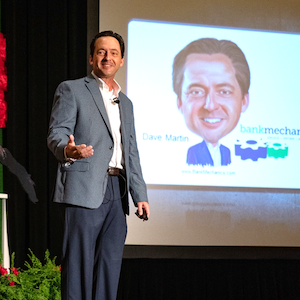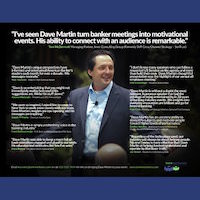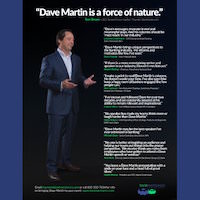 |
 |
Be happy with what you have and are, be generous with both, and you won't have to hunt for happiness." » William E. Gladstone
Making a List, Checking it Twice
I have to admit that I have a moment of worry whenever I read a headline related to something I regularly “preach” about. There are certain topics and suggestions that have become part of the fabric of many of my presentations. I’m always concerned that “new research” has come out and made an (unwitting) liar out me.
One of my favorite slides for many years has highlighted that the human brain performs the amazing act of remapping neurological development according to habitual thought patterns.
For instance, musicians, engineers, video game players, surgeons, carpenters, etc. develop slightly different neurological patterns that help them become more efficient at the things they focus on repeatedly.
That’s an amazing human trait. The downside of that, I’ve proffered, is that so many of us rewire ourselves to be pros at being miserable.
The example I suggest is that if most of us made a list of the things in life we are (or should be) thankful for and a list of things that sadden us, the first list is almost always considerably longer than the second.
Yet, when we have a choice of what to think about at any given moment, many of us choose to give an inordinate amount of attention to things on that sad list. My point has been that if a person chooses to continually focus on things that make him miserable, his brain begins “rewiring” itself to make him an amazingly efficient misery machine.
It was with great interest that I read recently-released results by the Mayo Clinic on “cracking the code of being happy.” After decades of studying thousands of subjects in dozens of clinical trials, their findings made me smile.
The lead researcher, Dr. Amit Sood, claims the foremost way to be happy is to consciously focus our attention on positive things.
He warns against, “…choosing to live focusing on what is not right in your life.” Their research suggests that consciously focusing on the more positive aspects of our lives tends to improve our outlooks, moods, and even health. (Go figure!)
No, ignoring negative things won’t make them go away. Things that can and should be addressed, well… can and should be addressed.
But much of our negative focus tends to be on the past, things out of our control, or simply irrelevant to our present or future; i.e. what scientists would call “dumb stuff.”
Which of your lists will you be focusing on today?
Staying Physical
Over the past couple of years I’ve frequently been contacted by reporters who are working on relatively similar columns. They are often looking for a counter argument to the pundits who point to falling transactions and foot traffic in branches and are calling for the phasing out of branches.
One of the quotes I like repeating to them is, “Never ask a barber if you need a haircut.”
I would suggest that some of the more vocal “tear it all down” folks have vested interests in seeing that happen. They either compete against branch networks or have solutions to sell once they’ve been diminished.
Many others have no real skin in the game. So what if their advice is wrong? They aren’t responsible to the customers or employees of the institutions they suggest dismantling.
That doesn’t mean there isn’t merit in some of their arguments. There is.
It’s just that some of the problems they point out are not as existential as they suggest. And solutions lie more in adjustments to our networks than in the disassembling of them.
I believe that the results of a recent survey by CARAVAN Omnibus Surveys support that theory. Surveying a representative national (US) sample, they found that an overwhelming 88% of US adults feel they need access to a physical branch location to go to for banking needs.









